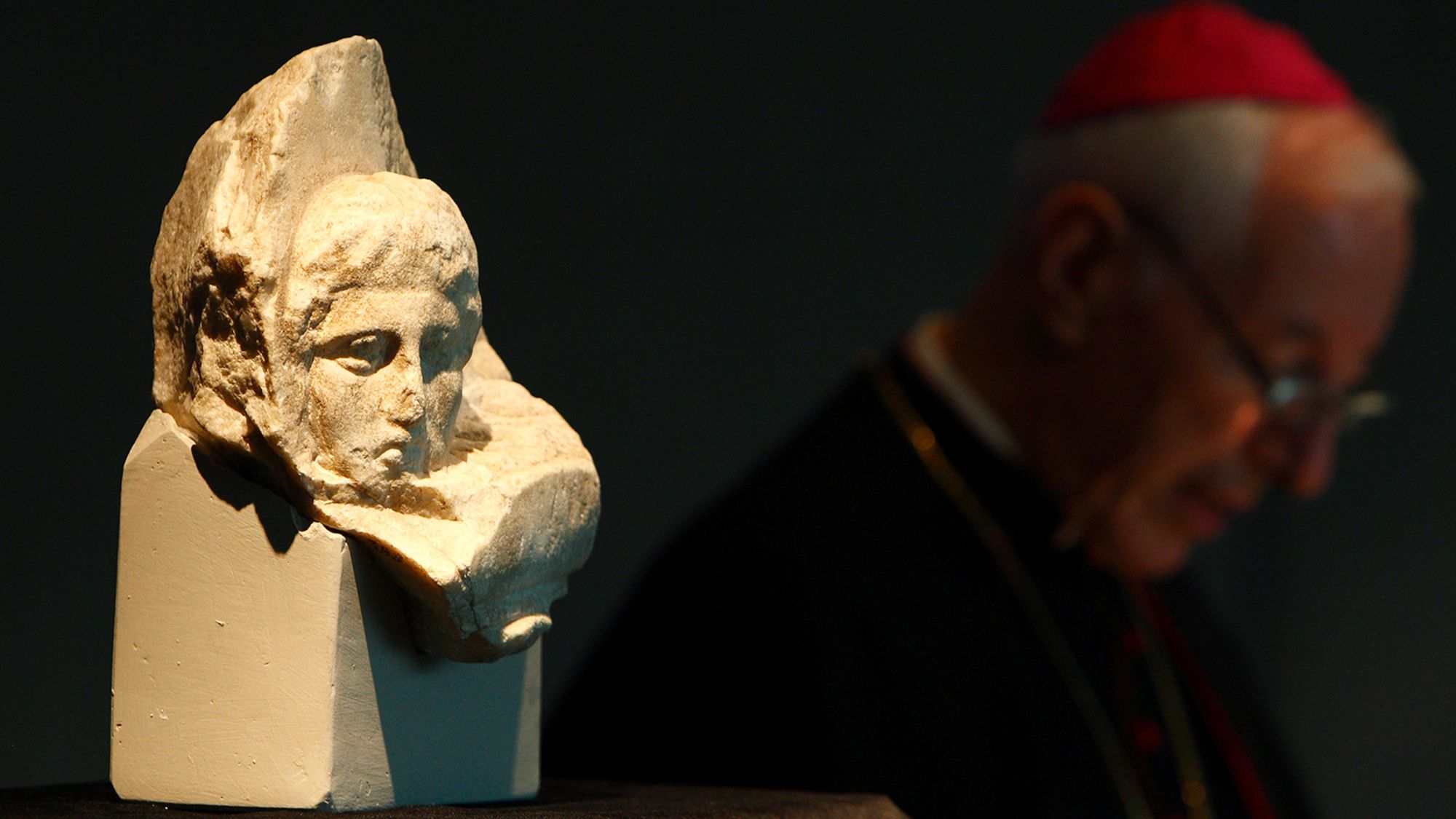Editor’s Note: This article was originally published by The Art Newspaper, an editorial partner of CNN Style.
The Vatican has signed an agreement to return three sculpture fragments that have been part of the Vatican Museums’ permanent collection for the past 200 years. Holy See officials have also indicated a timeline for their repatriation later this month, according to a press release. The move could ramp up the pressure on the British Museum to return the Parthenon marbles in its possession after decades of wrangling with the Greek authorities have shown signs of resulting in an agreement in recent months.
Officials signed off on the “donation” of the 2,500-year-old fragments — which show the heads of a horse, a bearded man and a boy — in a special ceremony at the Vatican on Tuesday attended by figures including Barbara Jatta, the director of the Vatican Museums. The Vatican previously announced plans to return the sculptures in December, shortly after Pope Francis met with Ieronymos II — the archbishop of Athens and Greece, and the head of the Greek Orthodox Church — in 2021.
The fragments will be definitively transferred to Athens on March 24 with a special ceremony planned to receive them, officials said in the press release.
Papamikroulis Emmanouil, who attended the signing ceremony on behalf of Ieronymos II, said in a statement that the agreement marked “a historic event,” adding that he hoped Pope Francis’ gesture would “be imitated by others.” He also suggested the move “partially compensates for” traumas resulting from injustices of the past.
Setting a precedent
Sculptures and friezes previously removed from the Parthenon — a former richly-decorated temple on the Athenian Acropolis built by Pericles between 447 and 432 BC — are currently displayed in museums including the British Museum in London, the Louvre in Paris and the Kunsthistorisches Museum in Vienna. Italy set a precedent for their return last year, when Palermo’s Antonino Salinas Regional Archaeological Museum transferred a fragment to Athens showing the foot of a goddess peeking from the bottom of a tunic.
Debate over the Parthenon marbles currently displayed at the British Museum, which are known as the Elgin Marbles after the British ambassador who removed them in the 19th century, has intensified in recent months. Following initially secret talks between Greek officials and the British Museum, Jonathan Williams, the museum’s deputy director, told The Sunday Times in August that they were “calling for an active ‘Parthenon partnership.’” Last month, George Osborne, the chairman of the British Museum, hinted on BBC Radio that the marbles would be shared by and exhibited in both Greece and the UK.
Speaking at Tuesday’s signing ceremony, Cardinal Vérgez claimed that returning the marbles would help countries build stronger ties.
“This gesture aims to build bridges of fraternity and show the world that a road of dialogue and peace always exists, as we hope will happen in the ongoing conflict in Ukraine,” he said. “The Pope’s art collection must become an important point of contact between peoples, faiths and the churches, overcoming every barrier.”
Top image: The three fragments, including this head of a boy, will be transferred to Athens on March 24.



